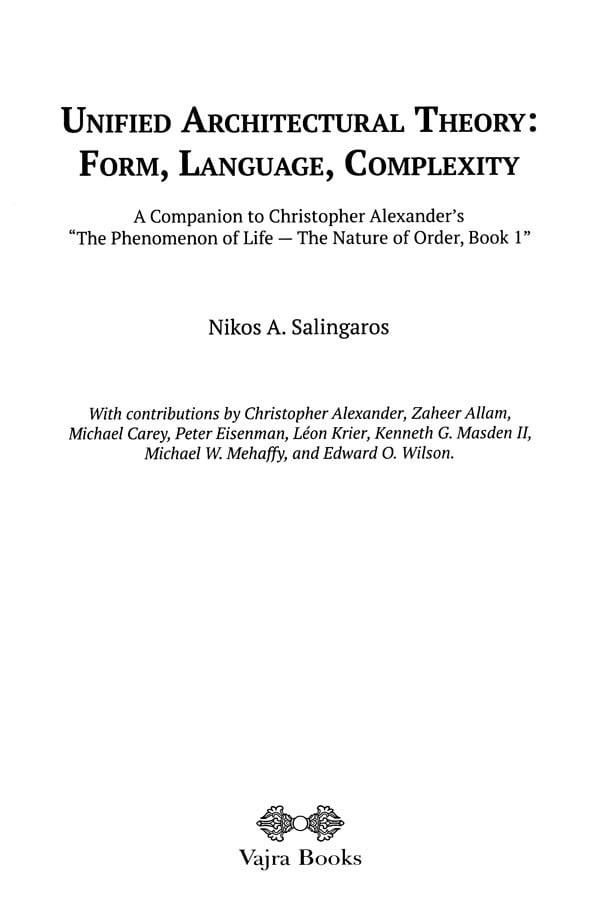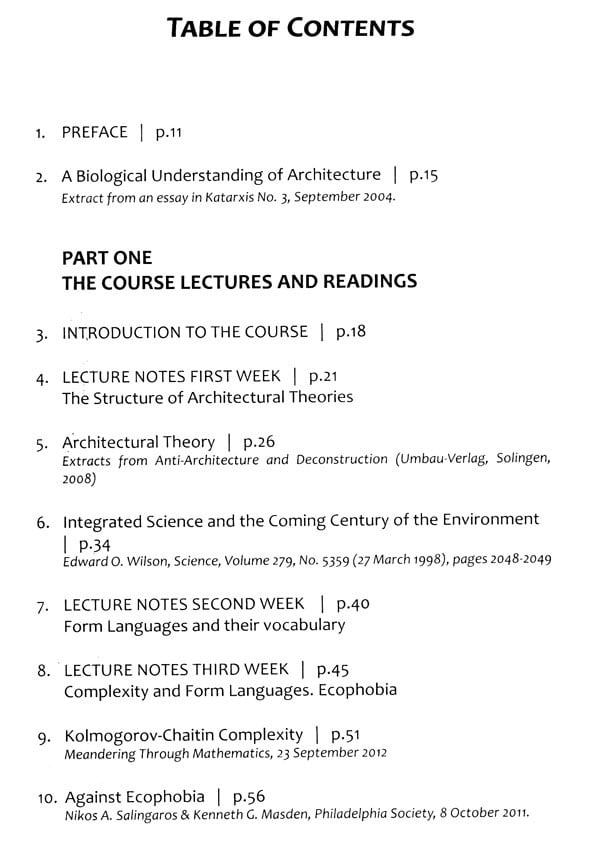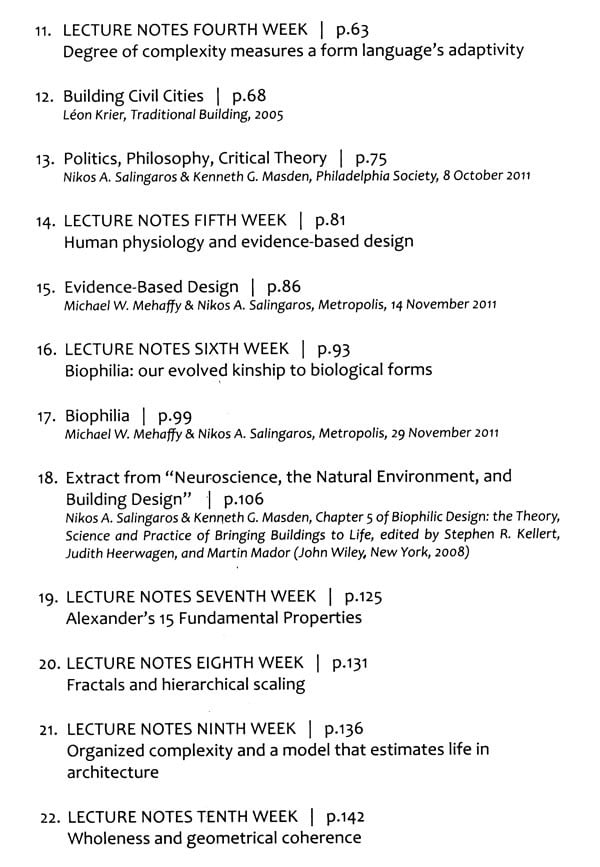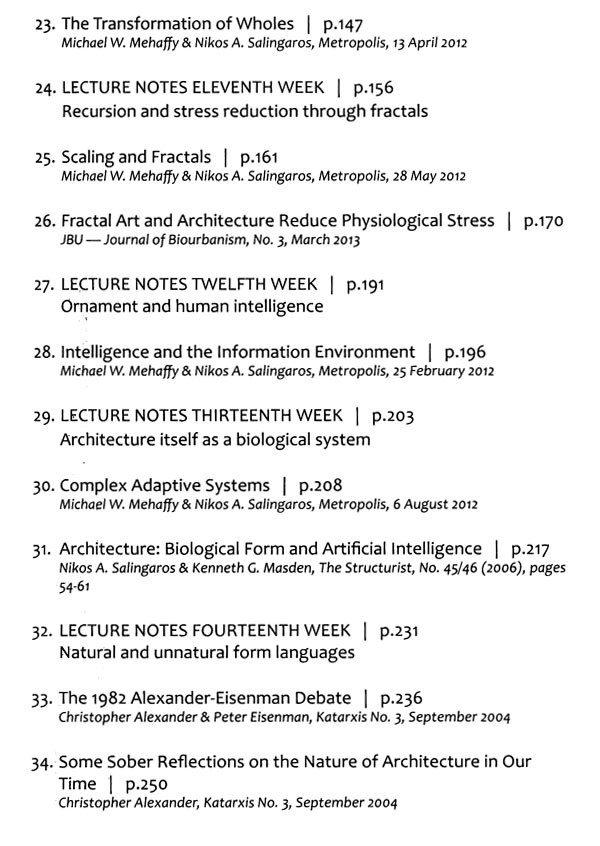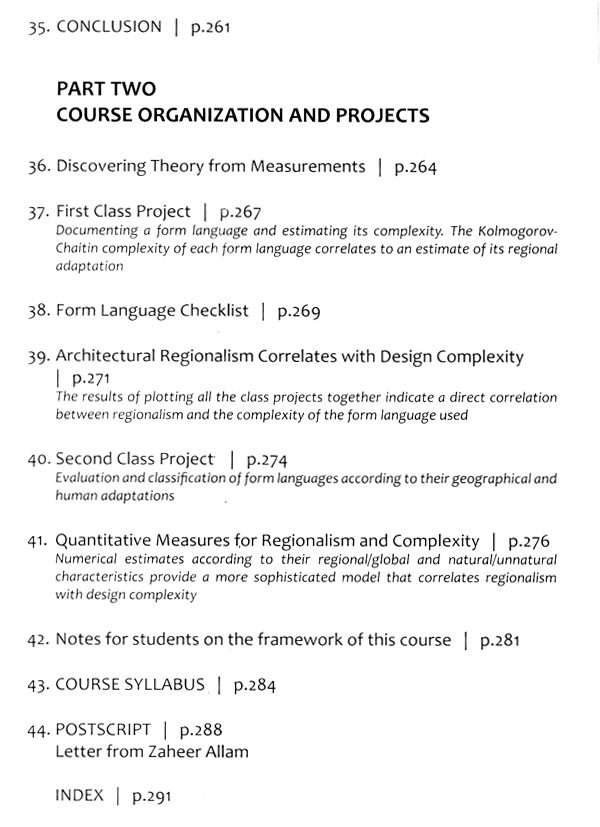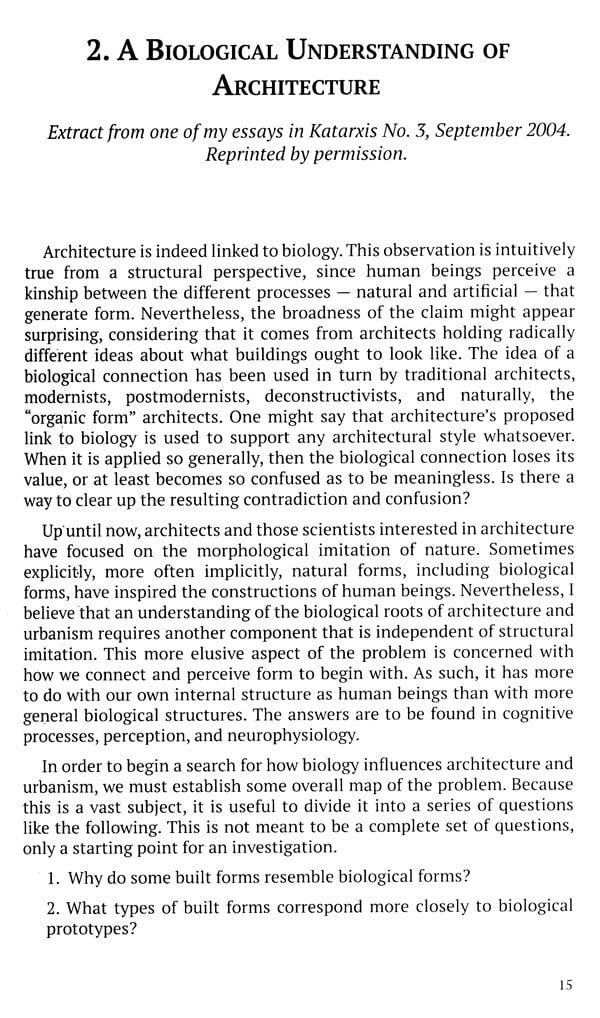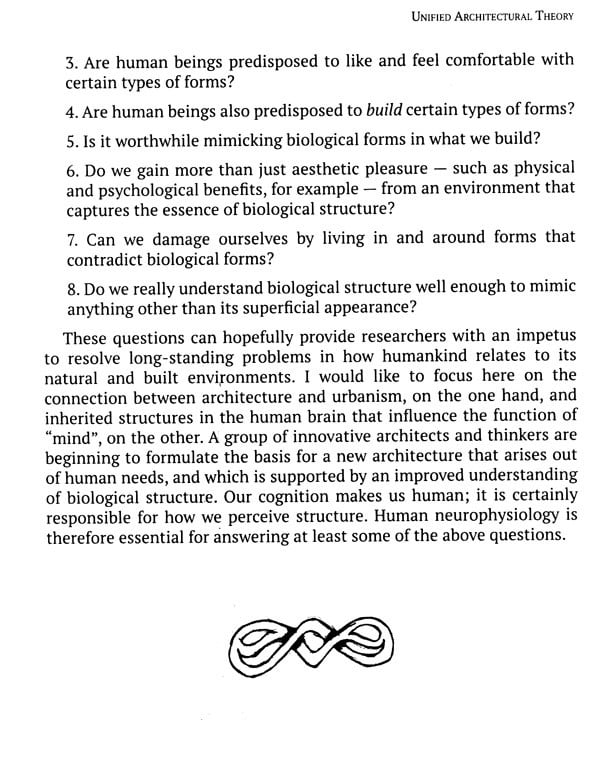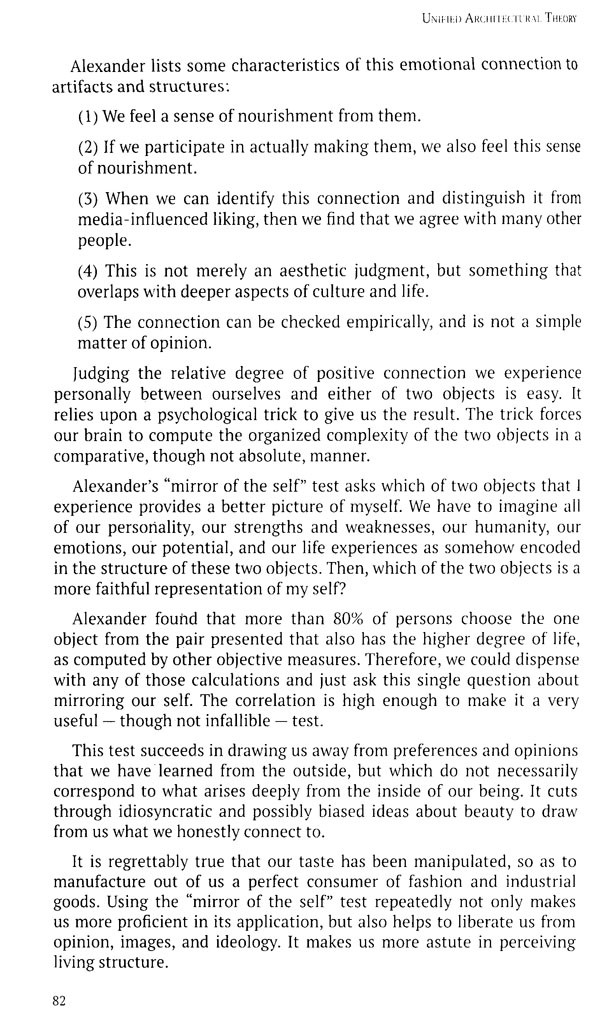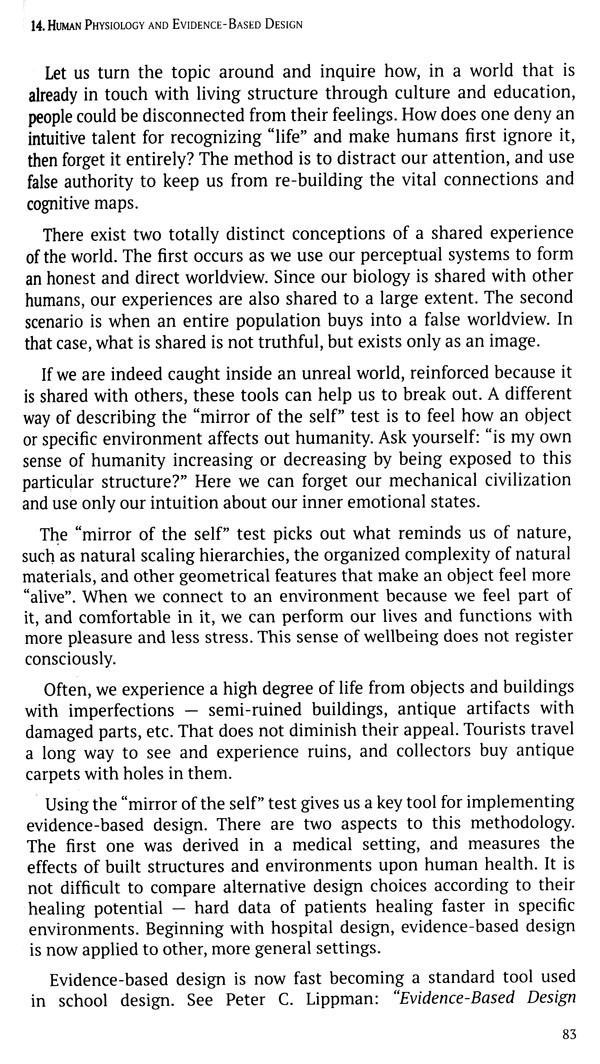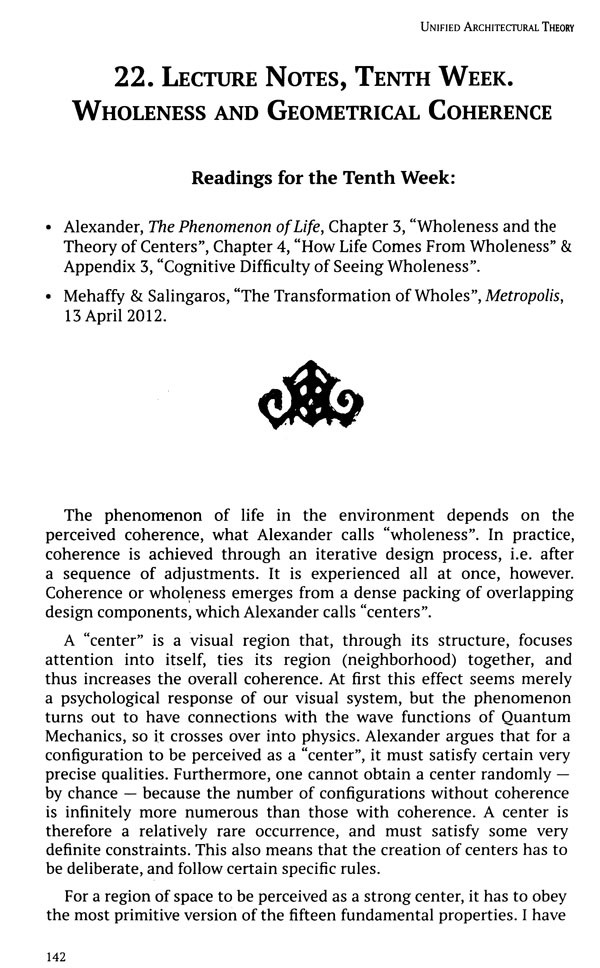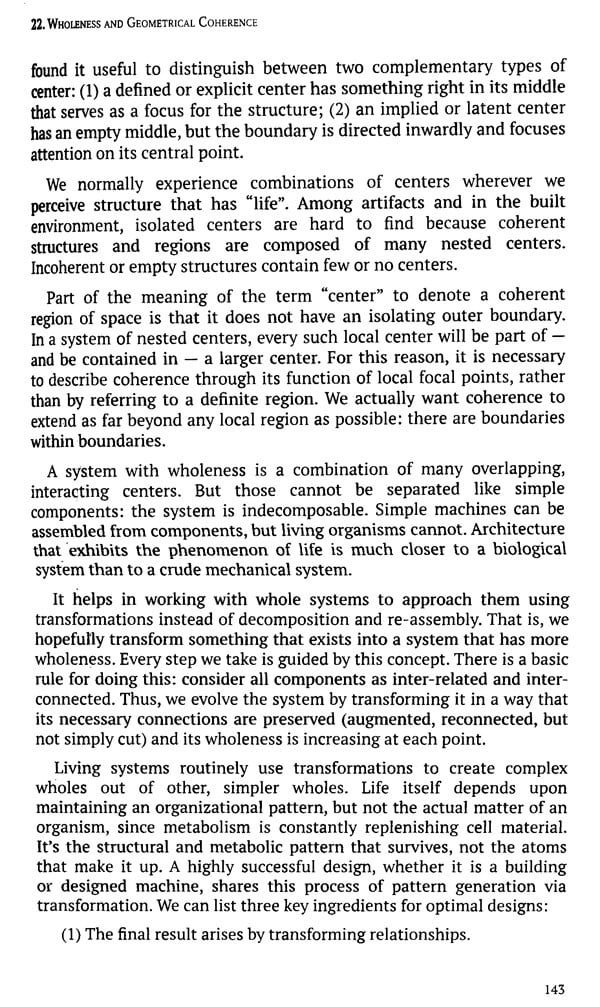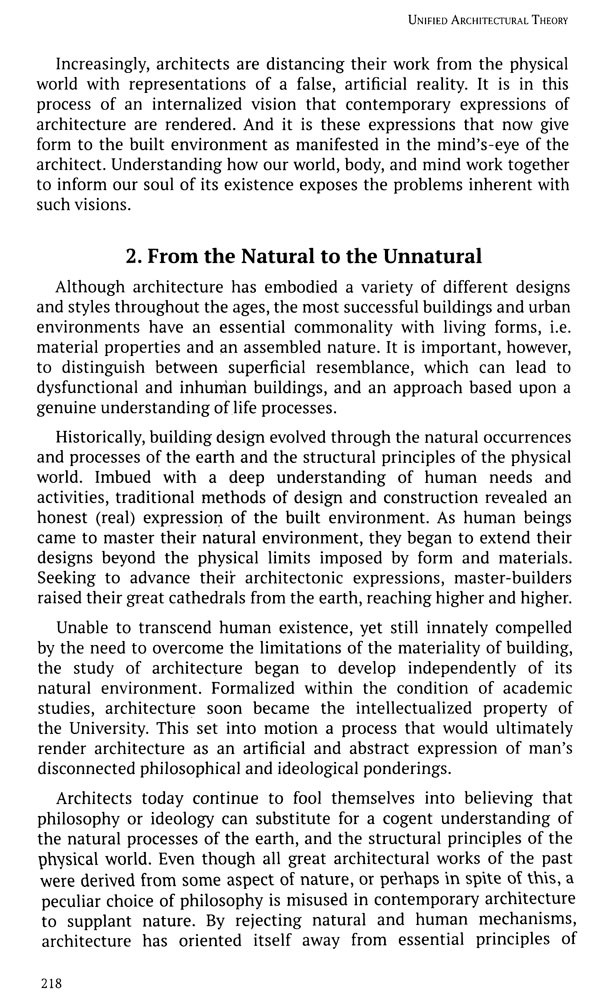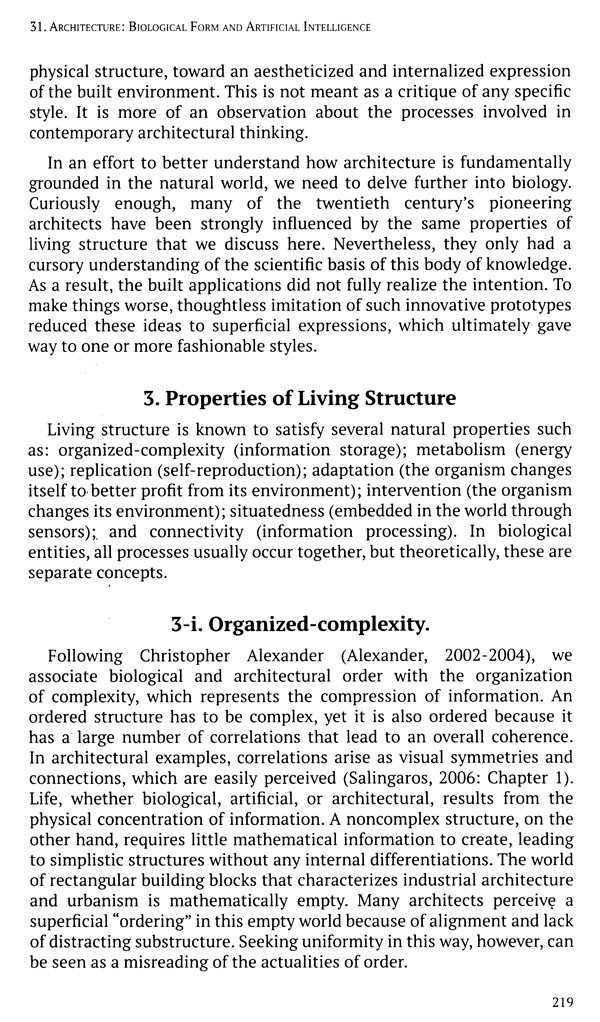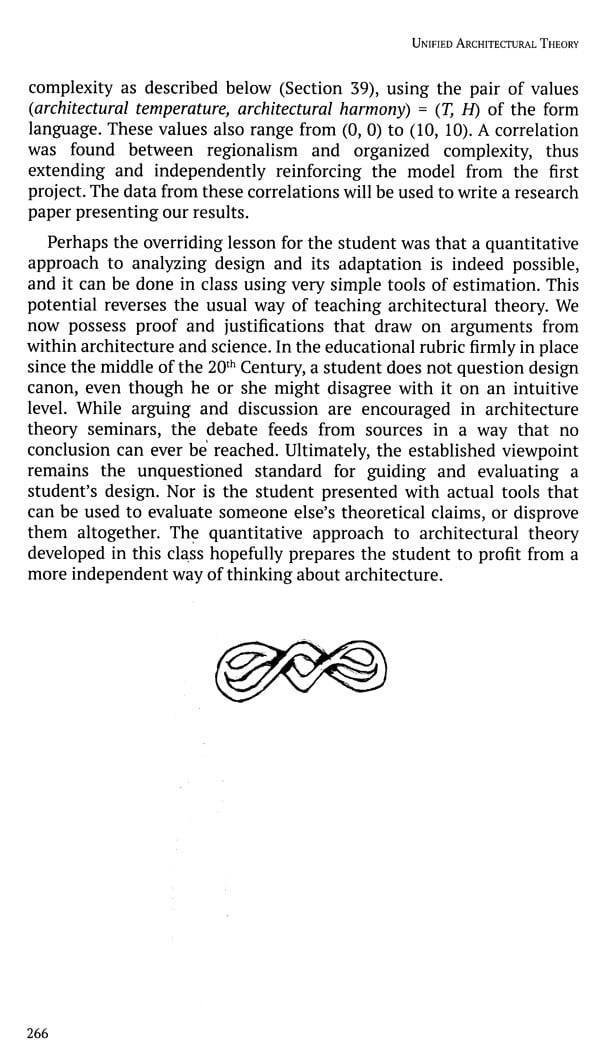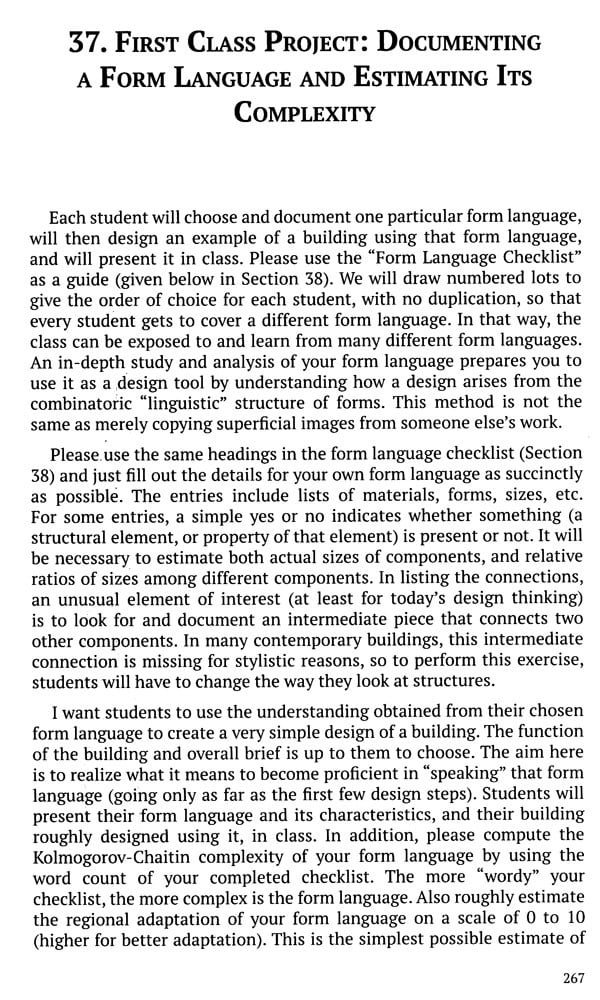
Unified Architectural Theory- Form, Language, Complexity
Book Specification
| Item Code: | UAO667 |
| Author: | Nikos A. Salingaros |
| Publisher: | Vajra Books, Nepal |
| Language: | English |
| Edition: | 2013 |
| ISBN: | 9789937623056 |
| Pages: | 300 |
| Cover: | PAPERBACK |
| Other Details | 9.00 X 6.00 inch |
| Weight | 400 gm |
Book Description
Organized in 44 sections, this book contains lecture notes and readings from course based on Christopher Alexander's The Nature of Order, Book 1, and using Salingaros A Theory of Architecture. It chronicles research results that can change our built environment for the better. Unified Architectural Theory is an innovative approach to the basis of architecture, permitting individual students and architects to assert their creativity in pursuing adaptive and sustainable design.
"Unified Architectural Theory' is not theory at all. It is evidence. It lets us see how until recently we have always designed and built. We've built buildings and spaces and towns that reflect the order in our genes, in the biological world we're part of We've felt at home in them because their order makes space for our body and our soul. Now we rediscover how to build a world that does not alienate us from who we are, a world that gives us joy, a world that brings us home."
Christopher Alexander, The Nature of Order: An Essay on the Art of Building and the Nature of the Universe, Book 1- The Phenomenon of Life, Center for Environmental Structure, Berkeley, 2001. . Nikos A. Salingaros, A Theory of Architecture, Umbau-Verlag, Solingen, 2006. (This book is also available in Chinese and in Persian).
Altogether, this material represents a new and ultimately more Intelligent approach to understanding architecture. By the end of the semester, students had covered and hopefully absorbed all of Alexander's book and Chapters 1 to 7 & 11 of my book, which are directly relevant to The Nature of Order. My Weekly Lecture Notes included here summarize and comment on the principal arguments from the reading assignments, which were revised after the class discussed the content in a roundtable manner. (Since neither Alexander's Volume 1 nor my own textbook were written explicitly for the precise course I had in mind to offer, it was necessary to skip around the order of the book chapters. somewhat, and this sequence is important.
The focus was on a Unified Architectural Theory, which includes and describes all of architecture, from traditional buildings to the latest design trends currently in fashion. More importantly, this comprehensive theoretical framework is based upon science and not on personal opinion. The theory is testable and has predictive value. Many architects drawn to study Alexander's work have resisted applying his ideas to their own current work because they have been under the mistaken belief that Alexander deals with only a particular ("Eurocentric" or "nostalgic") type of building.
**Contents and Sample Pages**
